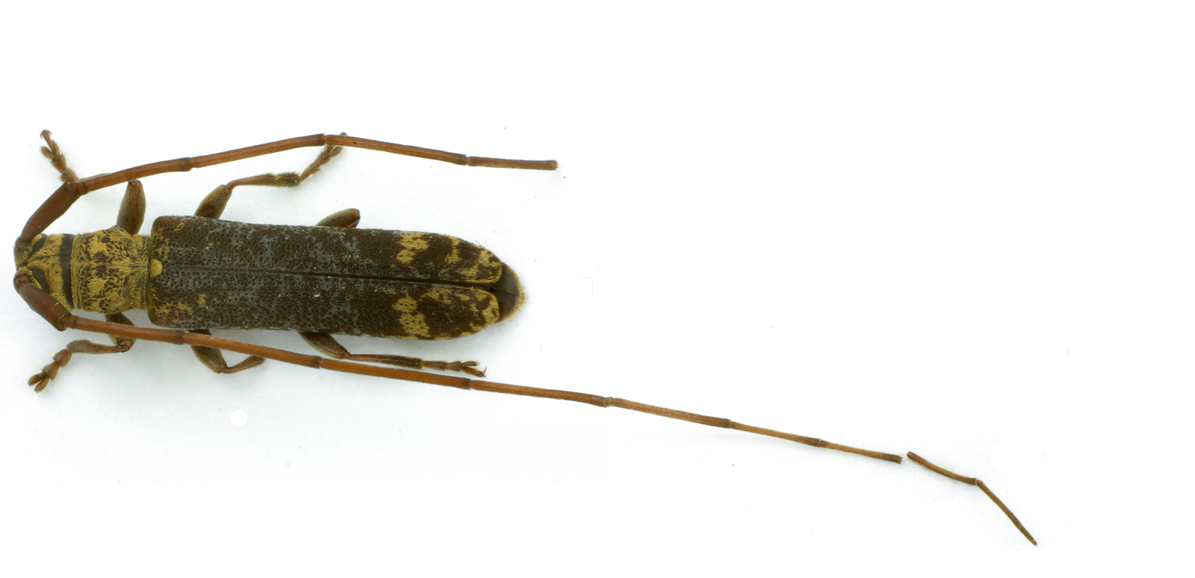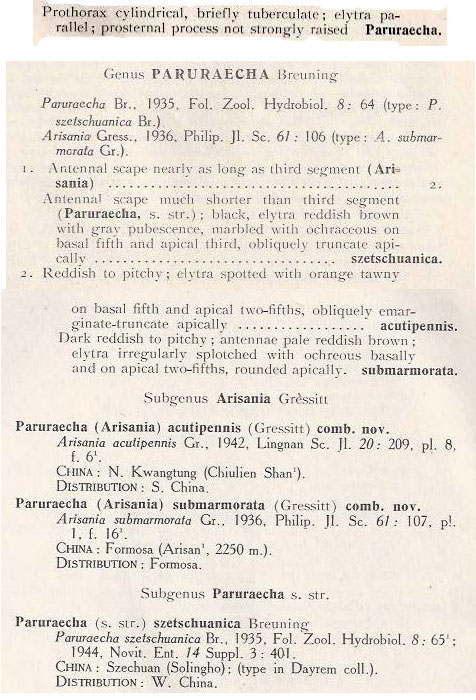| T O P I C R E V I E W |
| nalslan |
Posted - 13/06/2013 : 16:17:36

148.66 KB
Another nice species from Guizhou (again and again!), around 13 mm, altitude ~1300 m.
Can't figure out its genus, any idea?
Thanks. |
| 11 L A T E S T R E P L I E S (Newest First) |
| Xavier |
Posted - 18/06/2013 : 17:43:24
Well, 1.7 mm is really shorter than 2.3mm, as we listen it in entomology.
With the key, there is no other possibility ; the 4th species of this genus is from Sikkim (India). For the color, I don't know ... |
| nalslan |
Posted - 18/06/2013 : 13:26:25
That happened to me from times to times, lol.
I re-checked my specimen, lengths of scape and 3rd segment are roughly 1.7mm and 2.3mm, I am not sure whether it is "much shorter" enough.
Another I noticed is the elytra are black with reddish brown spots on shoulder and narrow strips on sides for my specimen.
Well, let's get back to it later.
quote:
Originally posted by Xavier
Yes, of course ! I wanted to write "much shorter", ...but I copied the wrong line 
|
| Xavier |
Posted - 15/06/2013 : 18:11:15
Yes, of course ! I wanted to write "much shorter", ...but I copied the wrong line  |
| nalslan |
Posted - 15/06/2013 : 17:53:40
Thank you Xavier!
The key you posted says the scape is much shorter than 3rd segment for P. szetschuanica, it seems right from the picture, I'll check it after I get back to lab.
quote:
Originally posted by Xavier
...unclear for me: in the key, the scape should be nearly as long as the third segment . Is it right on your specimen ?
For looking the type, let's wait few months 
|
| Xavier |
Posted - 15/06/2013 : 17:06:44
...unclear for me: in the key, the scape should be nearly as long as the third segment . Is it right on your specimen ?
For looking the type, let's wait few months  |
| nalslan |
Posted - 15/06/2013 : 16:03:11
Coooool!! You guys rock!!
I am in the field now, I will try to find if Dr. Li Chen's lab has a specimen of P. szetschuanica. And I wonder whether Xavier can look at the type of P. szetschuanica at MNH Paris if it is not too trouble.
Thank all of you, so nice of you.
quote:
Originally posted by Francesco
Eh, it could be.
I have found a picture of the type Paruraecha submarmorata (Gressitt) here.
|
| Francesco |
Posted - 15/06/2013 : 15:45:16
Eh, it could be.
I have found a picture of the type Paruraecha submarmorata (Gressitt) here. |
| Xavier |
Posted - 15/06/2013 : 13:51:53
Following Francesco, could it belong to this genus?
extracted of Gressitt (1951), pages 383 & 384:

In this case, it might be Paruraecha szetschuanica Breuning, 1935 |
| Francesco |
Posted - 14/06/2013 : 21:07:11
mmmhm... the antennae seem to me too long for Apomecynini or Desmiphorini; moreover, it seems to me that the pronotum is toothed and the scape is ridged... Lamiini???  |
| Xaurus |
Posted - 14/06/2013 : 15:38:07
Maybe it belongs to the genus Xylariopsis Bates ? |
| Xavier |
Posted - 13/06/2013 : 21:15:21
My only idea: a Desmiphorini, genus Zorilispe? (because of the groove on second tibias); There are 2 species in Vietnam and Cambodia... |


